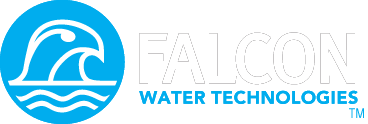In our blog, we love to write about our exciting water conservation technologies, but we have never featured the mind whose continuous efforts has elevated our products’ functionality, reliability and ingenuity. Today, we interview Ned Goldsmith, VP Water Conservation, about his innovation process and how he ended up working for Falcon Waterfree Technologies.
When did you start working for Falcon?
In my past life, I ran an ice hockey equipment company. I had grown up playing hockey and dreamed of playing professionally as a goalie. I was a skinny kid, so to help me move faster I started making my own light weight equipment. While I failed at becoming a professional, the equipment became a hit. Once I joined Easton Sports, I did the same with the “Synergy” once piece stick technology– a worldwide hit that is still used by most elite players around the world today.
It was a great experience, but over time, I thought about using my aptitude for invention in the sustainability world. Around that time, Simon Davis joined the company and brought a new vision– Falcon would be a technology leader focused on water savings. He opened the door to me, and in late 2012, I became part of the family. Within a few months, we began in earnest to develop a new product line. The rest, as they say, is history…
What are you inspired by?
I’m inspired by people and creative problem solving. Diversity is really important to me – as it broadens the perspective. I love the moment when a group of people get together and are able to find the right puzzle piece to define a path – I guess you could call that innovation.
How does your process work?
My creative process consists of mostly just listening. There are so many technologies out there, but very few understand the true needs of the customer. The next step is to assemble the existing technologies into a new recipe that meets our customers’ needs.
What is your favorite part within that process?
I love the problem solving. It’s the most fun. Fun is critical – because if you don’t enjoy what you are doing, you are mediocre at it – and in our new world, there is always someone who will do it better than you if the passion isn’t there.
What products are you most proud of?
Tough one. I suppose the Synergy hockey stick from my past and the new Hybrid Urinal from Falcon. But, we have some stuff in the hopper right now that is even better! The next 12-18 months are going to be fun.
Are there any new technological trends catching your attention? Which ones would you like to try in the future?
The list is long – but I like products that combine technologies in some way that provides a “best of both worlds” solution – like a water saving shower that still feels great rather than feeling like you can’t get your hair wet. More on that in the future…











